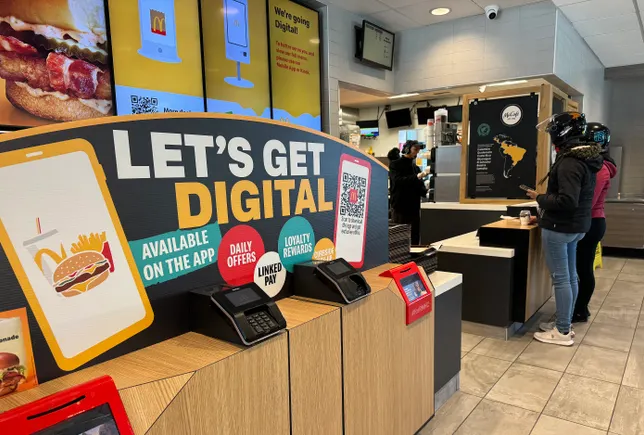Streaming services have taken the entertainment world by storm, offering consumers a new way to access their favorite shows and movies. Two popular options are MVPDs (Multichannel Video Programming Distributors) and vMVPDs (Virtual Multichannel Video Programming Distributors). While they may sound similar, there are distinct differences between the two. In this article, we will explore the differences and similarities between MVPDs and vMVPDs, helping you understand which option may be the best fit for your needs.
What is an MVPD?
An MVPD, or Multichannel Video Programming Distributor, is a traditional cable or satellite TV provider. These companies deliver TV programming to subscribers through an encrypted signal, which requires a set-top box or dedicated receiver to decode and display the content on a television. MVPDs often offer bundled packages that include TV, internet, and phone services.
What is a vMVPD?
On the other hand, a vMVPD, or Virtual Multichannel Video Programming Distributor, is a streaming service that delivers TV programming over the internet. Instead of requiring a physical set-top box, vMVPDs allow subscribers to access their content through apps or websites on various devices, such as smartphones, tablets, smart TVs, and streaming media players. Some well-known vMVPDs include YouTube TV, Hulu + Live TV, and Sling TV.
How Do They Differ?
1. Delivery Method:
The most obvious difference between MVPDs and vMVPDs is the delivery method. MVPDs utilize traditional cable or satellite infrastructure to deliver TV programming, while vMVPDs use internet connections to stream content. This difference means that MVPDs require physical equipment installed in your home, such as a cable box or satellite dish, whereas vMVPDs only require an internet connection and a compatible device.
2. Channel Lineup:
Another notable difference is the channel lineup. MVPDs often offer a wide range of channels, including local broadcast networks, cable channels, premium networks, and on-demand content. Depending on the package you choose, you can have access to hundreds of channels. In contrast, vMVPDs typically offer a more limited channel lineup compared to MVPDs. While they still provide popular channels, they might not include every channel you are used to, especially niche or regional networks.
3. Pricing:
When it comes to pricing, MVPDs and vMVPDs can vary significantly. MVPDs often have complex pricing structures due to the bundled services they offer. You may find different tiers with varying channel lineups and pricing options. Additionally, MVPDs usually require contracts, installation fees, and equipment rental charges. On the other hand, vMVPDs generally offer more straightforward pricing models with various subscription options. They usually have a base package with add-ons for premium channels and features. However, it’s worth noting that some vMVPDs may increase their prices over time.
4. Equipment and Installation:
As mentioned earlier, MVPDs require physical equipment, such as a set-top box or satellite dish, to receive and decode the TV signal. This equipment needs to be installed by a technician, and you may also need multiple boxes for additional TVs in your home. vMVPDs, on the other hand, do not require any physical equipment other than the devices you already own, such as a smartphone, tablet, or streaming media player. This convenience makes vMVPDs an attractive option for those who prefer a more plug-and-play setup.
How Are They Similar?
Although MVPDs and vMVPDs have their differences, there are also some similarities between the two:
1. Live TV:
Both MVPDs and vMVPDs offer live TV options, allowing subscribers to watch shows and events in real-time. While vMVPDs deliver live TV over the internet, MVPDs have been providing this service for many years through their cable or satellite infrastructure. Whether you prefer the convenience of streaming or the traditional cable experience, both options have you covered.
2. On-Demand Content:
Both MVPDs and vMVPDs offer on-demand content, allowing subscribers to watch movies, TV shows, and other programs at their convenience. However, the availability of on-demand content can vary between providers. Some vMVPDs offer extensive libraries of on-demand content, including movies and TV series from various networks, while MVPDs may have more limited on-demand options.
3. Add-Ons and Premium Channels:
Both MVPDs and vMVPDs offer add-ons and premium channel options. These additional packages allow subscribers to access premium channels like HBO, Showtime, or STARZ for an extra fee. Whether you prefer to catch up on the latest Game of Thrones episode or binge-watch your favorite series on Showtime, both MVPDs and vMVPDs provide you with the flexibility to customize your channel lineup.
4. DVR Functionality:
Another similarity between MVPDs and vMVPDs is the ability to record and store your favorite shows with DVR functionality. While the specific features and limitations may vary between providers, both options allow you to watch your recorded shows at a later time, ensuring you never miss an episode of your favorite series.
Conclusion
In summary, MVPDs and vMVPDs offer different ways to access TV programming. MVPDs rely on traditional cable or satellite infrastructure, while vMVPDs utilize the internet for streaming. MVPDs often provide a wider channel lineup but require physical equipment and installation, while vMVPDs offer more flexibility and convenience with their app-based services. Both options have their pros and cons, and the right choice depends on your personal preferences and needs.












Leave a Reply